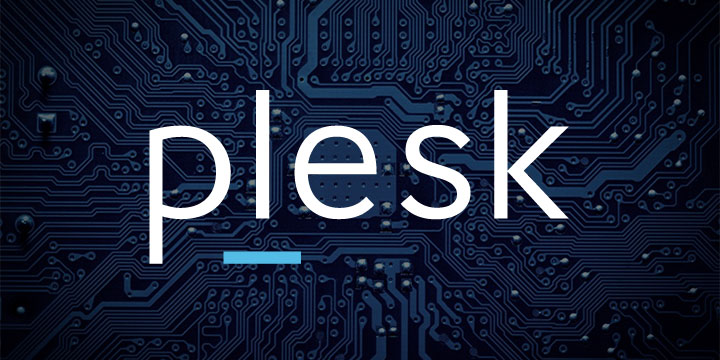Drake vs Kendrick Lamar- A case study in Human Behavior, Psychology and Power

Drake vs. Kendrick Lamar: A Psychological Analysis of Hip-Hop Rivalry
In the world of hip-hop, few rivalries have sparked as much debate and analysis as the ongoing feud between Drake and Kendrick Lamar. This conflict, which has seen both artists exchange barbs through their music, offers a fascinating case study in human behavior and psychology.
The Roots of Rivalry
At the heart of any rivalry lies the basic human instinct of competition. From a psychological standpoint, competition can be seen as a driving force for improvement, pushing individuals to outdo one another and themselves. In the case of Drake and Kendrick Lamar, their rivalry stems from a desire to be recognized as the preeminent figure in hip-hop, a genre that has long celebrated the competitive spirit through lyrical battles and public call-outs.
Ego and Identity
Both Drake and Kendrick Lamar have crafted distinct personas that reflect their musical and personal philosophies. Drake, the Toronto-born rapper, often portrays himself as the introspective, emotive artist, unafraid to explore themes of love, vulnerability, and success. Kendrick Lamar, hailing from Compton, presents a more complex narrative, weaving social commentary with personal history, challenging listeners to confront uncomfortable truths about society and themselves.
The clash between these two identities is a classic example of the psychological concept of the “ego.” Each artist’s ego drives them to assert their dominance in the hip-hop landscape, defending their personal brand against perceived threats. This defense mechanism can lead to aggressive behavior, as seen in their diss tracks and public statements.
Group Dynamics and Tribalism
The feud between Drake and Kendrick Lamar also highlights the role of group dynamics in human behavior. Fans often align themselves with one artist or the other, creating a sense of tribalism. This behavior is rooted in our evolutionary past, where survival often depended on the strength and unity of the group. In modern times, this translates into fierce loyalty to one’s chosen “tribe,” whether it be a sports team, political party, or, in this case, a favorite rapper.
The Psychology of Diss Tracks
Diss tracks are a staple of hip-hop feuds, and the exchanges between Drake and Kendrick Lamar are no exception. These tracks serve as a public platform for airing grievances and showcasing lyrical prowess. Psychologically, diss tracks can be seen as a form of catharsis, allowing artists to release pent-up emotions and assert their status. However, they can also perpetuate the conflict, as each new track adds fuel to the fire.
The rivalry between Drake and Kendrick Lamar can be analyzed through the lens of Robert Greene’s “48 Laws of Power,” which outlines principles for attaining and maintaining power. Here are a few ways their feud might relate to some of these laws:
- Law 1: Never Outshine the Master. Both artists must navigate the balance between showcasing their talent and not eclipsing industry leaders or mentors who can influence their careers.
- Law 2: Never Put Too Much Trust in Friends; Learn How to Use Enemies. The hip-hop industry is known for its shifting alliances and the strategic use of rivalries for publicity and to galvanize fan bases.
- Law 3: Conceal Your Intentions. Artists often keep their true intentions and strategies hidden, revealing them only through their music and public personas.
- Law 15: Crush Your Enemy Totally. While this might seem extreme, in the context of a musical feud, it translates to using diss tracks and public statements to decisively win public opinion.
- Law 28: Enter Action with Boldness. Both Drake and Kendrick Lamar have been bold in their musical choices and public statements, not shying away from controversy.
These laws, among others, can be seen at play in the dynamics of Drake and Kendrick Lamar’s rivalry, reflecting the strategic moves made by each artist to maintain or enhance their power within the music industry. It’s important to note that Greene’s laws are amoral and can be interpreted in various ways, from manipulative to strategic. In the case of Drake and Kendrick Lamar, their actions can be seen as a mix of genuine artistic expression and calculated moves to navigate the complex landscape of the music industry.
- Law 6: Court Attention at All Costs. In the music industry, attention is a currency. Both Drake and Kendrick Lamar have used their feud to stay in the spotlight, releasing tracks that spark discussion and controversy, thereby keeping their names and music relevant.
- Law 13: When Asking for Help, Appeal to People’s Self-Interest, Never to Their Mercy or Gratitude. Collaborations in hip-hop can be seen through this lens. By working with other artists, Drake and Kendrick Lamar may be appealing to their collaborators’ self-interest of gaining exposure or credibility, rather than relying on past favors or relationships.
- Law 16: Use Absence to Increase Respect and Honor. Both artists have periods where they step back from the public eye, which can make their return to the music scene more impactful. Their absence can create a sense of anticipation and increase their influence when they release new material.
- Law 33: Discover Each Man’s Thumbscrew. This law is about finding the weaknesses of others. In their lyrical exchanges, both rappers have aimed to pinpoint and exploit each other’s vulnerabilities, whether it be personal history, artistic choices, or public image.
- Law 43: Work on the Hearts and Minds of Others. Music has the power to influence emotions and thoughts. Drake and Kendrick Lamar both craft their lyrics and public statements to resonate with their audiences, shaping perceptions and garnering support.
- Law 45: Preach the Need for Change, but Never Reform Too Much at Once. Both artists advocate for change in their music, whether it’s personal growth or social issues. However, they do so without alienating their core fan base, ensuring they remain relatable and their message is well-received.
These examples illustrate how the strategies outlined in Greene’s “48 Laws of Power” can be reflected in the actions and tactics used by Drake and Kendrick Lamar in their ongoing rivalry. It’s important to remember that these laws are interpretive and not all may agree on their application or ethical implications in real-life scenarios.
Let’s analyze some of the diss tracks exchanged between Drake and Kendrick Lamar in light of Robert Greene’s “48 Laws of Power”:
- Drake’s “Push Ups”1: This track can be seen as an application of Law 15: Crush Your Enemy Totally. Drake mocks Kendrick’s stature and label deals, aiming to undermine his credibility and status in the hip-hop community. By doing so, Drake attempts to assert his dominance and leave no room for Kendrick’s comeback.
- Kendrick Lamar’s “Euphoria”2: Kendrick’s response showcases Law 33: Discover Each Man’s Thumbscrew. He criticizes Drake’s alleged cultural appropriation and positions himself as the moral and authentic alternative. This track aims to expose Drake’s vulnerabilities and question his authenticity.
- Drake’s “Taylor Made Freestyle”3: Here, Drake employs Law 6: Court Attention at All Costs by using artificial intelligence to craft bars from influential figures like Snoop Dogg and Tupac Shakur. Although controversial, this move garnered significant attention and kept the spotlight on Drake.
- Kendrick Lamar’s “6:16 in LA”4: Kendrick alleges that Drake’s record label, OVO, has a mole, which aligns with Law 14: Pose as a Friend, Work as a Spy. By making such claims, Kendrick creates suspicion and mistrust within Drake’s camp, potentially sowing discord and weakening his position.
- Drake’s “Family Matters”1: This track could be seen as an example of Law 43: Work on the Hearts and Minds of Others. Drake makes personal allegations against Kendrick, which could sway public opinion and emotionally engage the audience in the feud.
These analyses show how the strategies from “48 Laws of Power” can be interpreted and potentially applied to the ongoing feud between Drake and Kendrick Lamar. It’s important to note that these interpretations are speculative and based on the public personas and music of the artists, not their private intentions or actions.
Conclusion
The rivalry between Drake and Kendrick Lamar is more than just a series of musical exchanges; it’s a window into the complex interplay of human behavior and psychology. Through their ongoing feud, we see the manifestation of competition, ego, identity, group dynamics, and the cathartic power of artistic expression. As observers, we can learn much about ourselves and the society we live in by examining the psychological underpinnings of such high-profile conflicts.
In the end, whether one prefers Drake’s emotive storytelling or Kendrick Lamar’s introspective lyricism, it’s clear that both artists have left an indelible mark on the genre and culture of hip-hop. Their rivalry, while contentious, has undoubtedly contributed to the evolution of the art form and the conversation surrounding it.



















